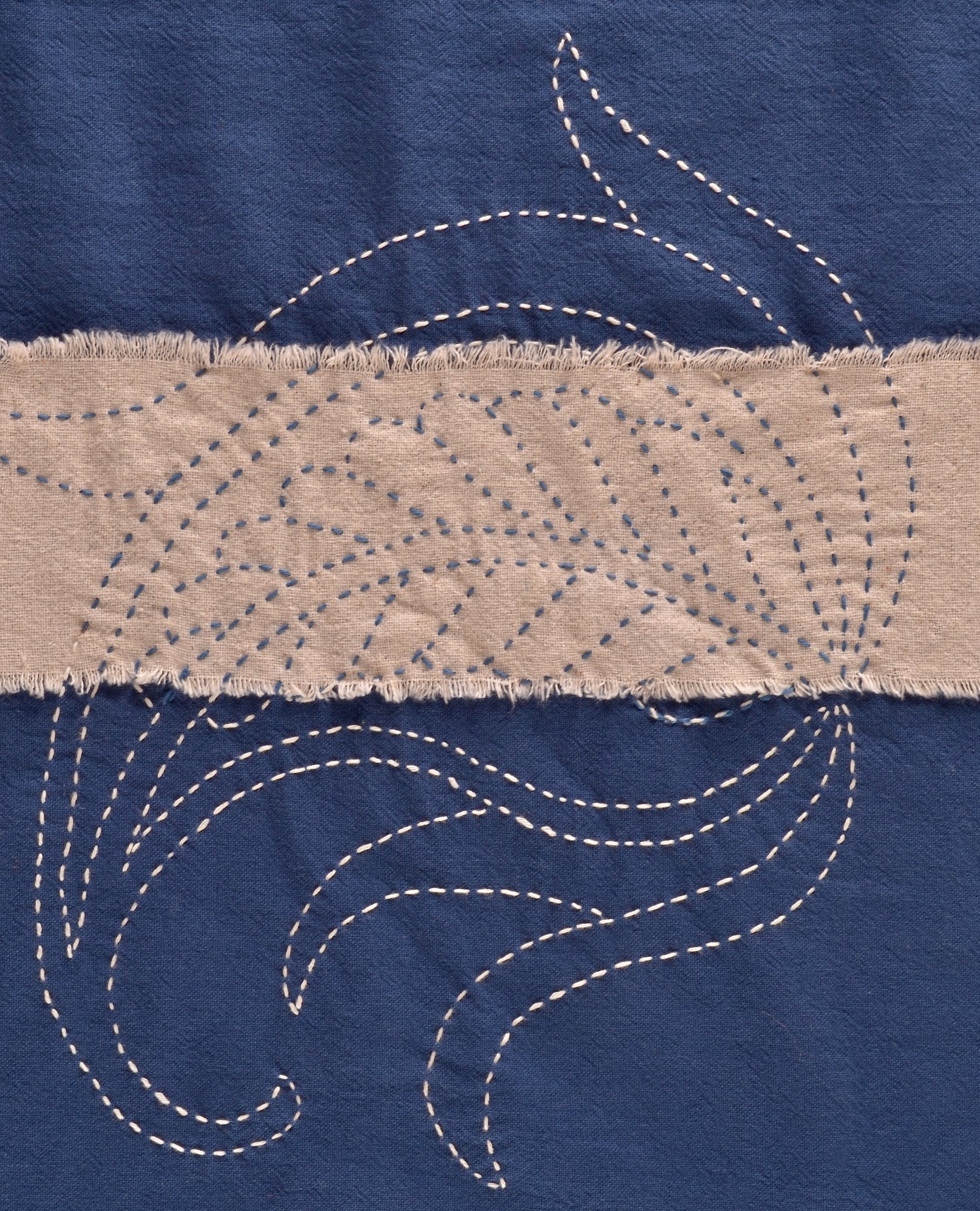
January 05, 2025
Should I Sashiko stitch through one layer of fabric, or two?
This is a quick blog to answer a question that comes up fairly often.
Should I do my sashiko stitching through one layer of fabric, or two?
Stitching through one fabric is easier and therefore faster and will be beautiful. When finished it will look more like an embroidery than a sashiko stitching as sashiko is, properly speaking, a quilting technique for making cloth thicker and warmer. Embroideries tend to be smooth and flat when finished.
Here is an example of stitching through one layer of fabric with coloured sashiko threads.
Stitching through two fabrics will give the piece more body, which is a lovely thing, and will allow a more quilt-y texture to happen, especially with time and washing.
Below is an example of stitching through two layers of cotton that has been washed a few times which has increased the quilt pucker. The fabric won't pucker further, that stops after one or two washes.
Sashiko is essentially a quilting technique meant to join together layers of cloth to make them warmer so it was stitched through two or more layers of cloth, or was used to add layers of cloth to worn areas on clothing to keep the clothing usable, or to make it warmer. Or both.
This piece shows two fabrics stitched onto a backing fabric.
So which should you do?
I think it depends on which look you prefer, smooth and flat, or quilt-y textured.
I do both depending on the purpose of the piece I am stitching.
If you do decide to stitch through two fabrics here are the important things:
- be sure the fabric you choose for the back is a loose woven lightweight cotton (to be safe prewash it for shrinkage). If your fabric is difficult to pull needle and thread through you won't enjoy your project. Why do that to yourself?
- be sure you leave a little slack in the sashiko thread on the back of your stitches when you turn a corner and in the middle of long lines of stitching. (See the photo below). This allows the fabric to lay flat in spite of the extra thickness the stitching thread is adding to the fabric. These small amounts of extra thread on the back will usually disappear as your stitching progresses.
- You can find more about this in blogs on my website :-)
- It is also good idea to do this when stitching on a single layer of fabric!
Enjoy you stitching!
Susan






